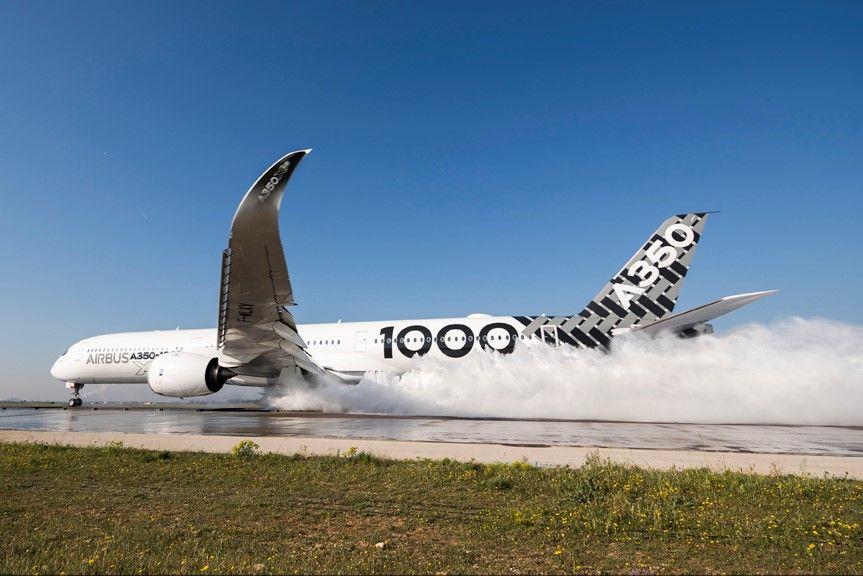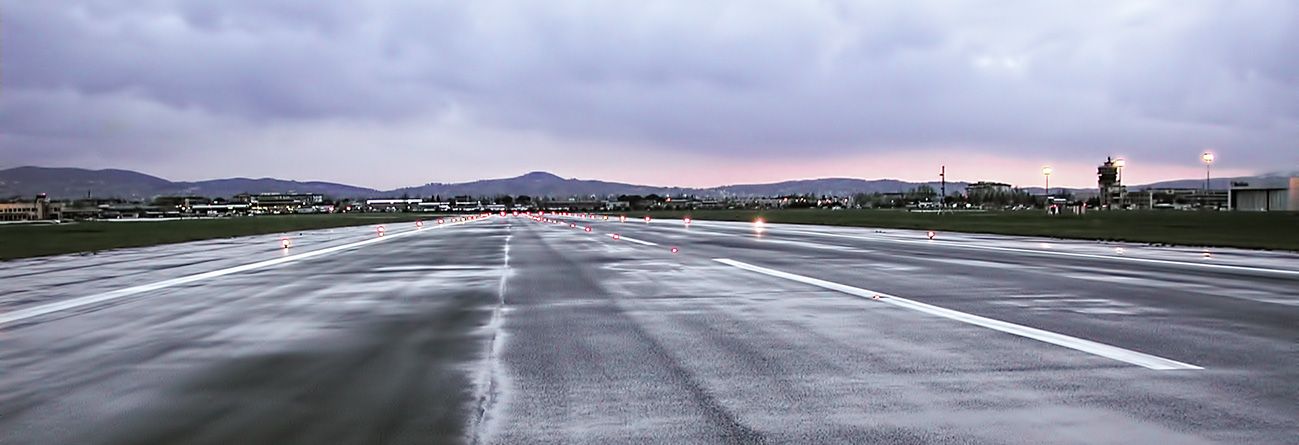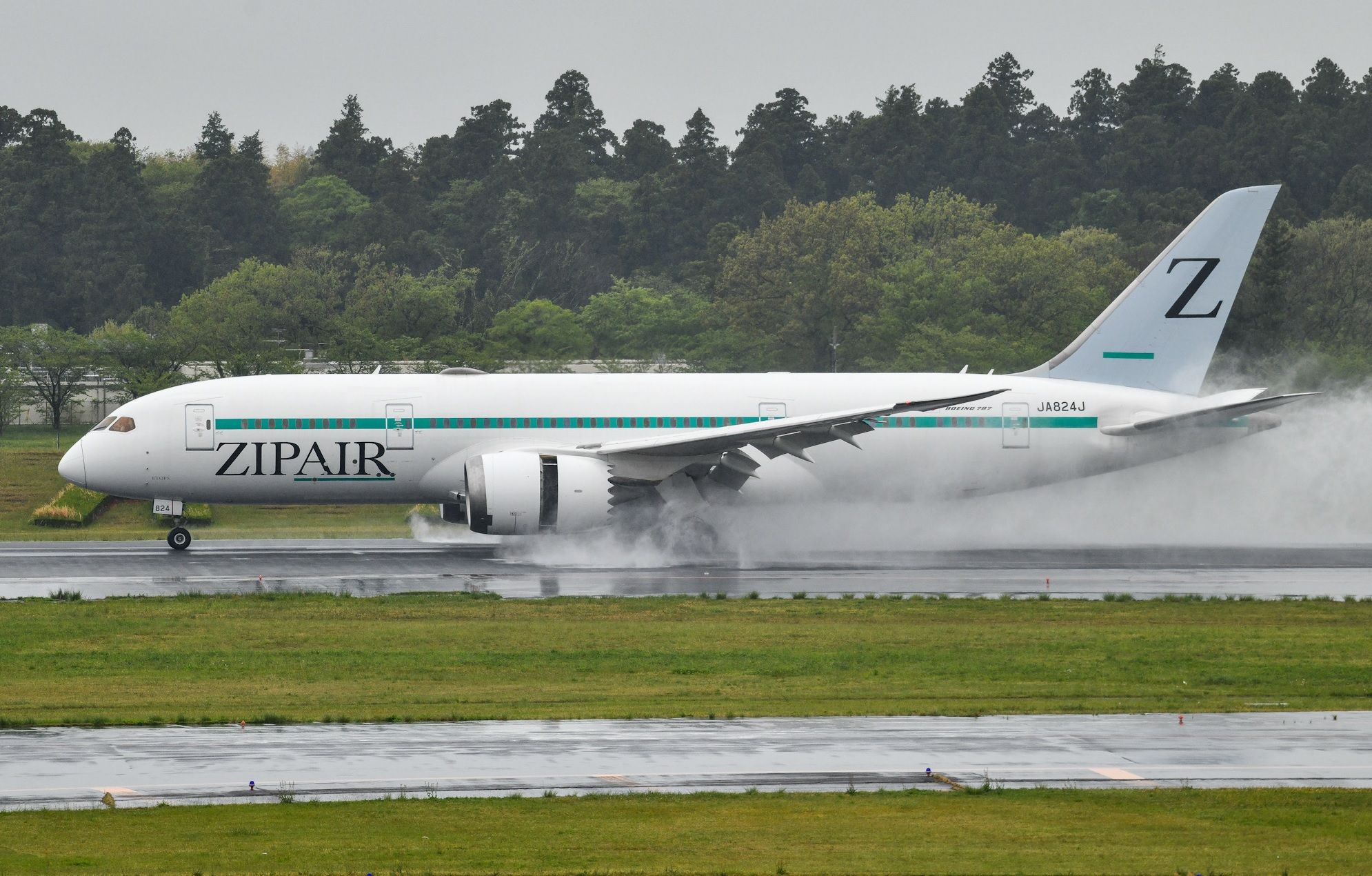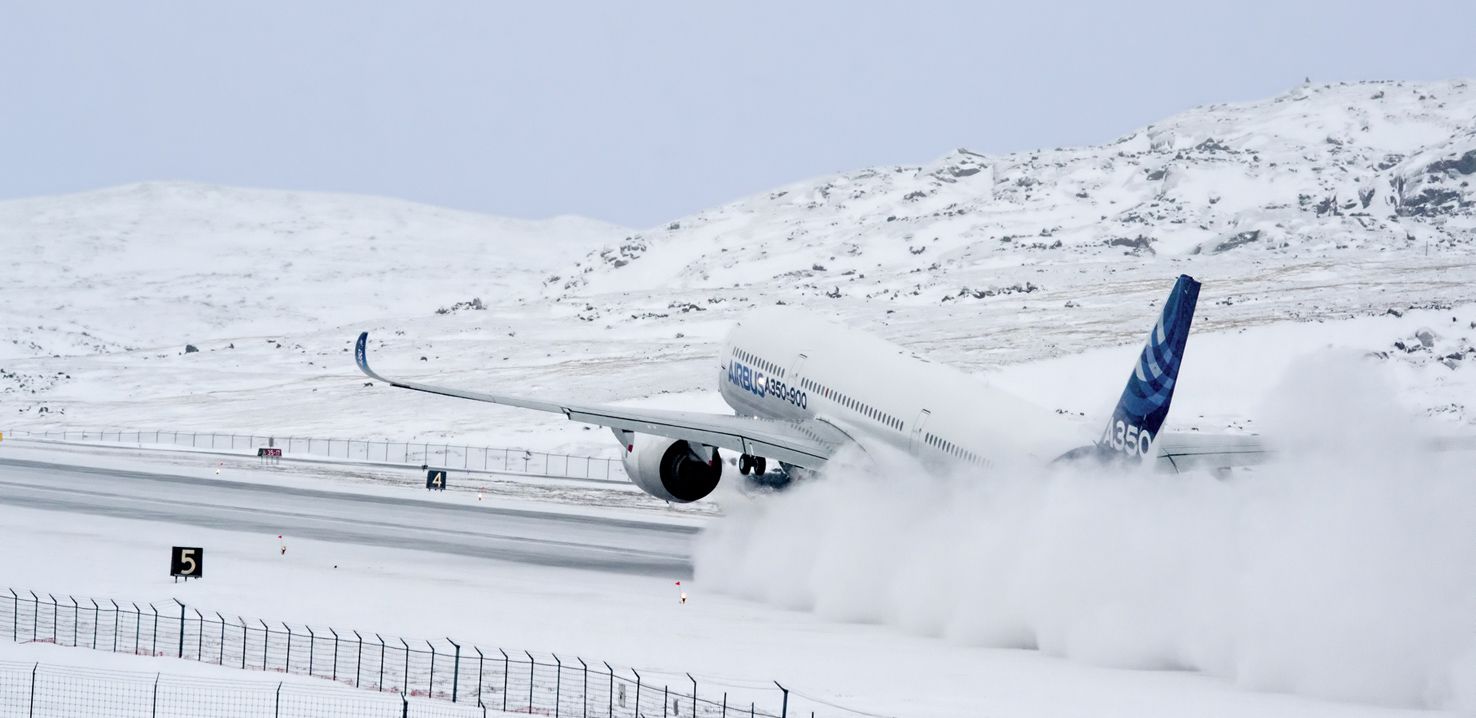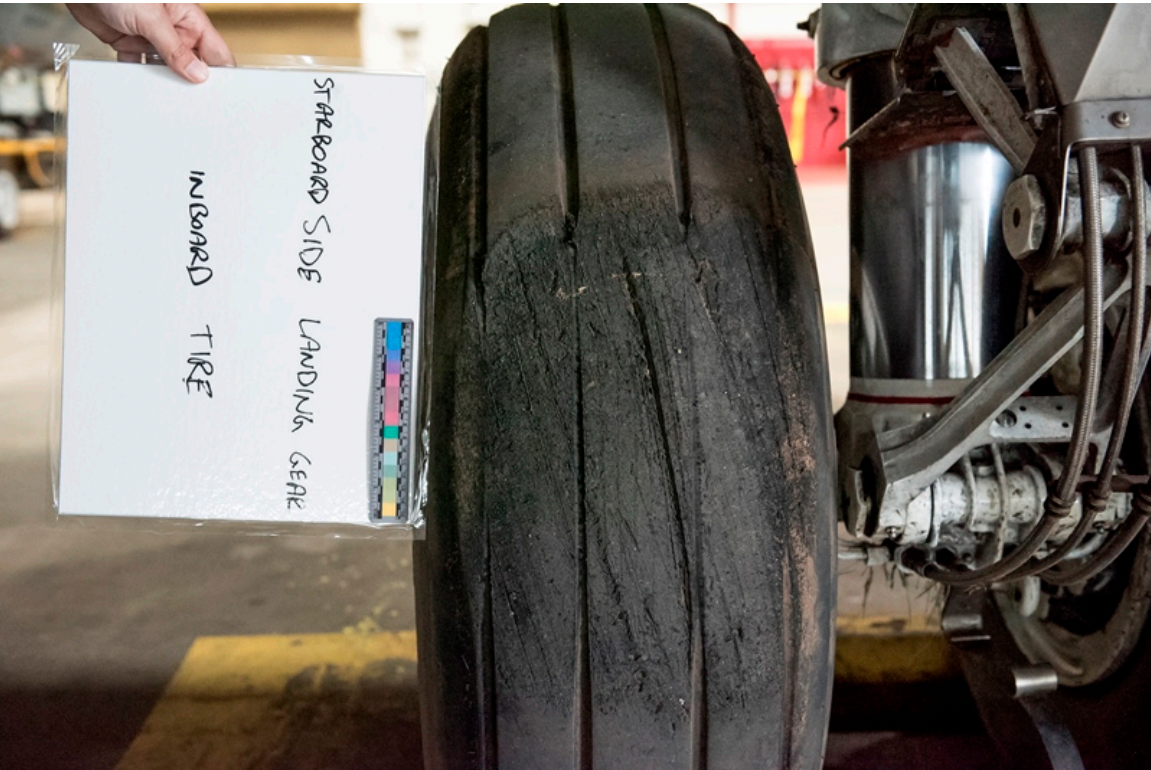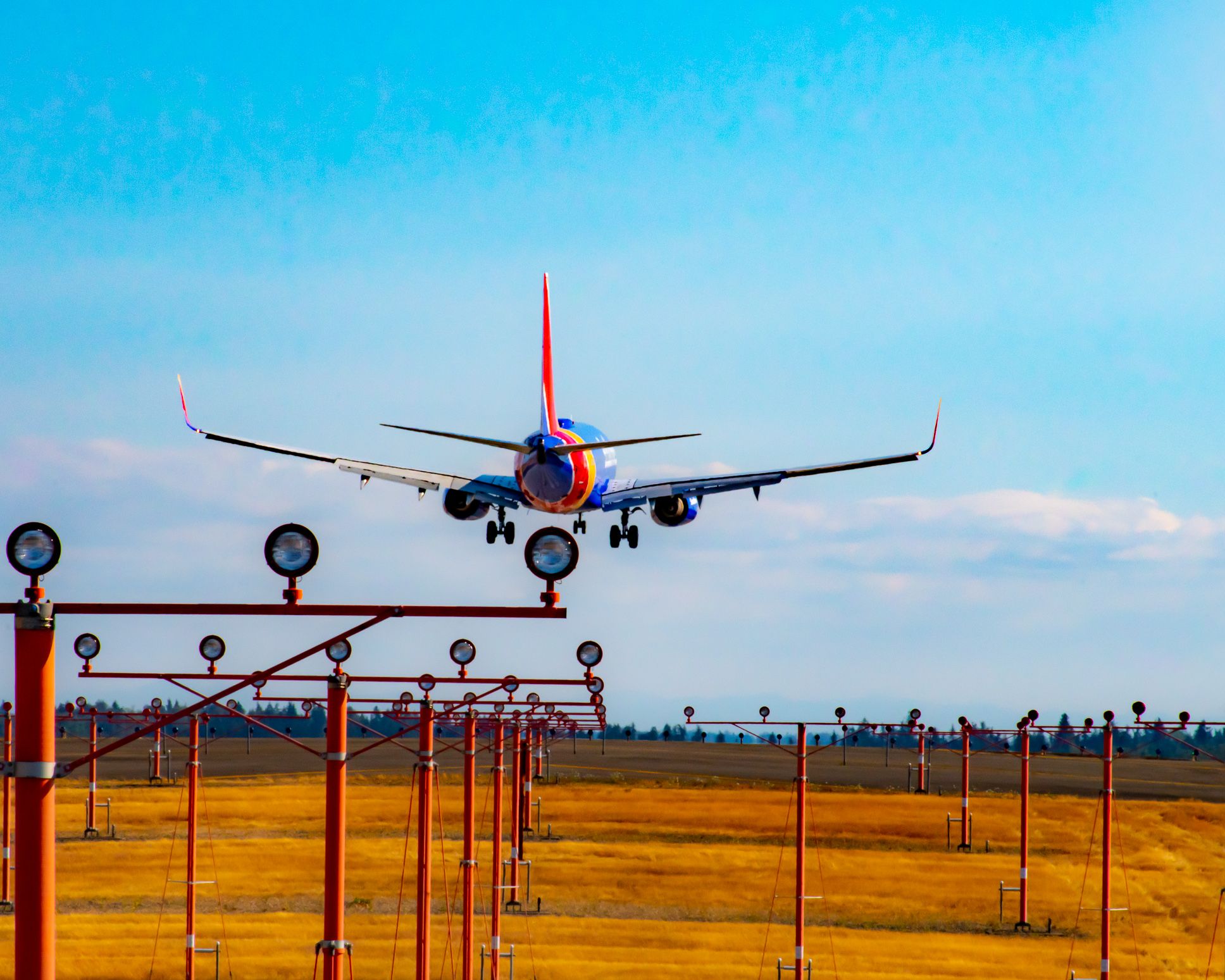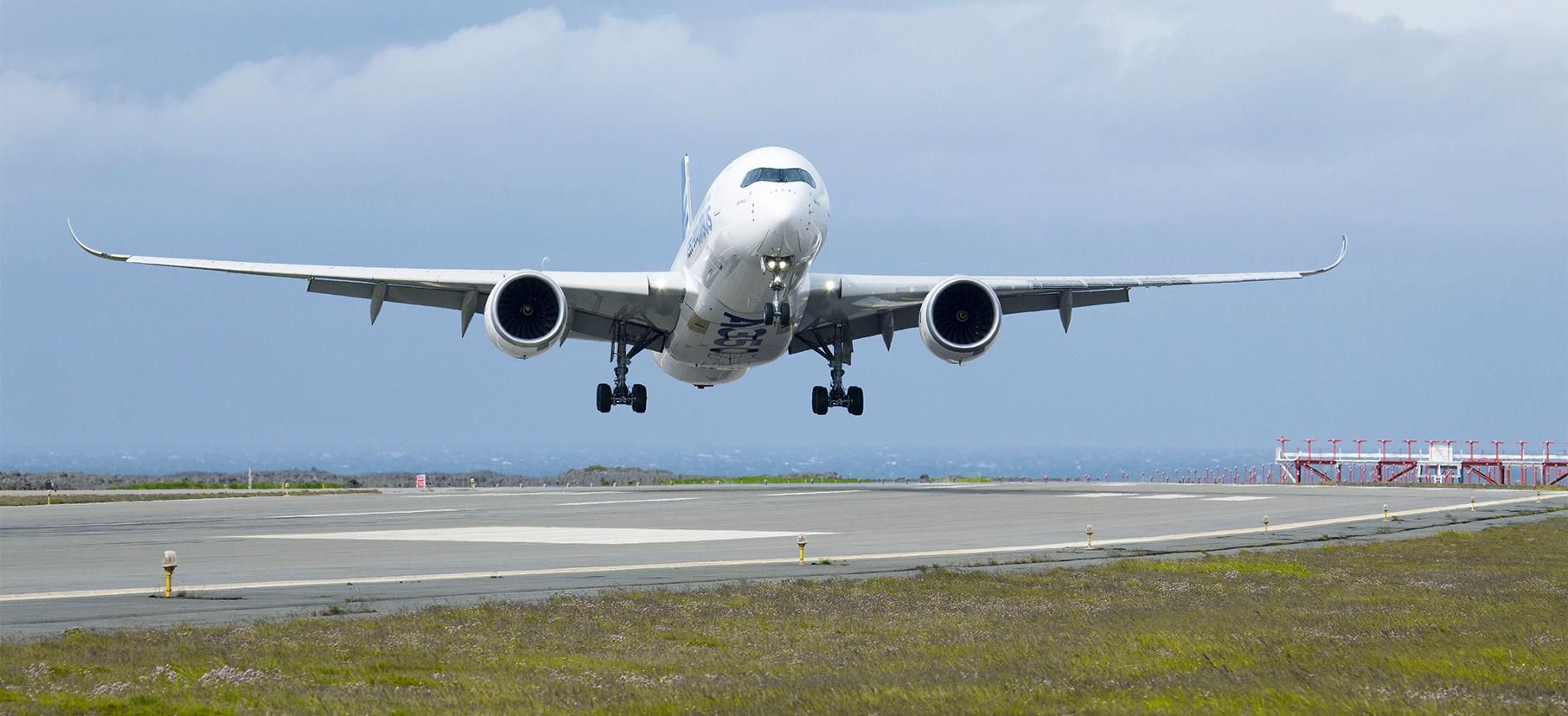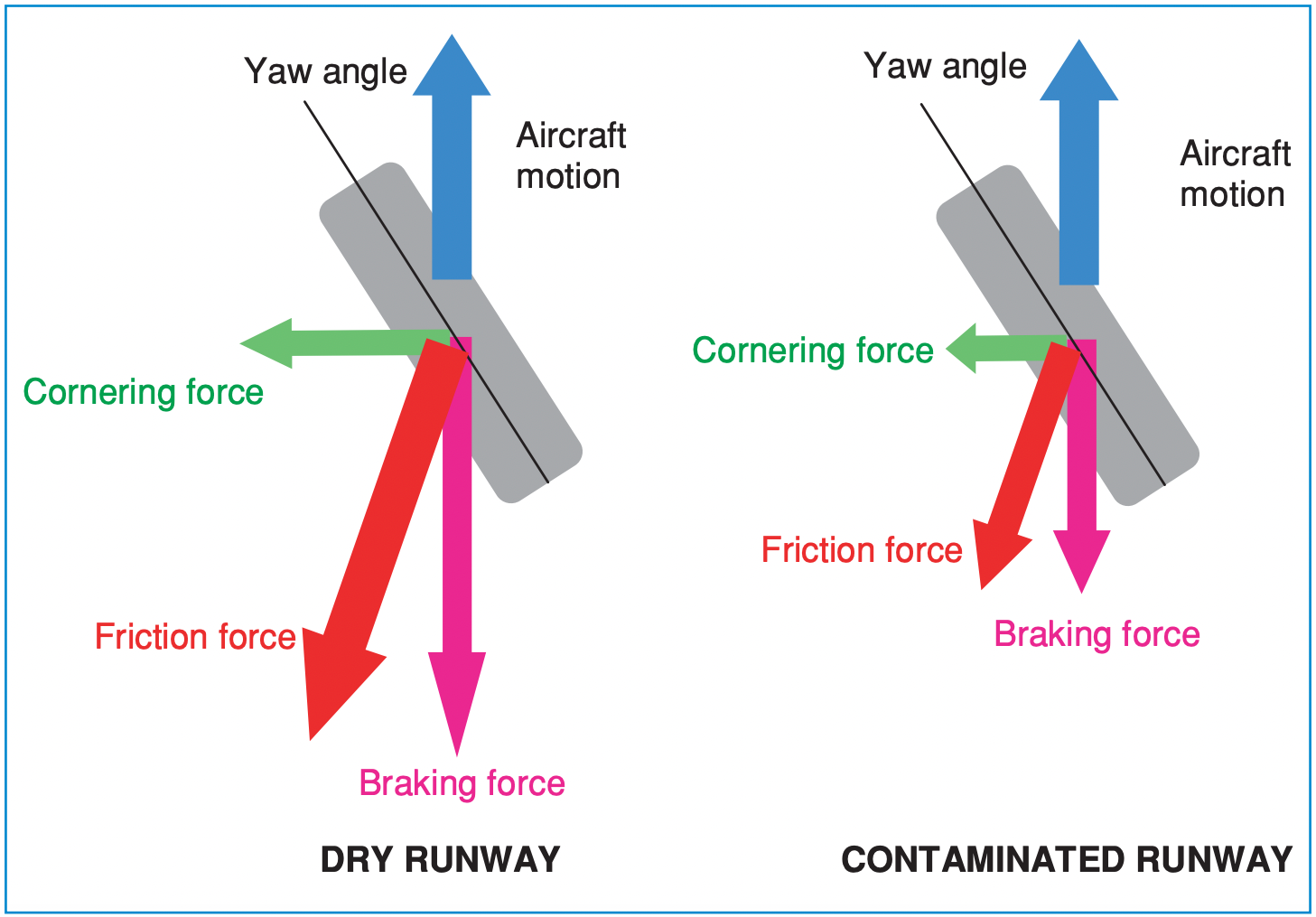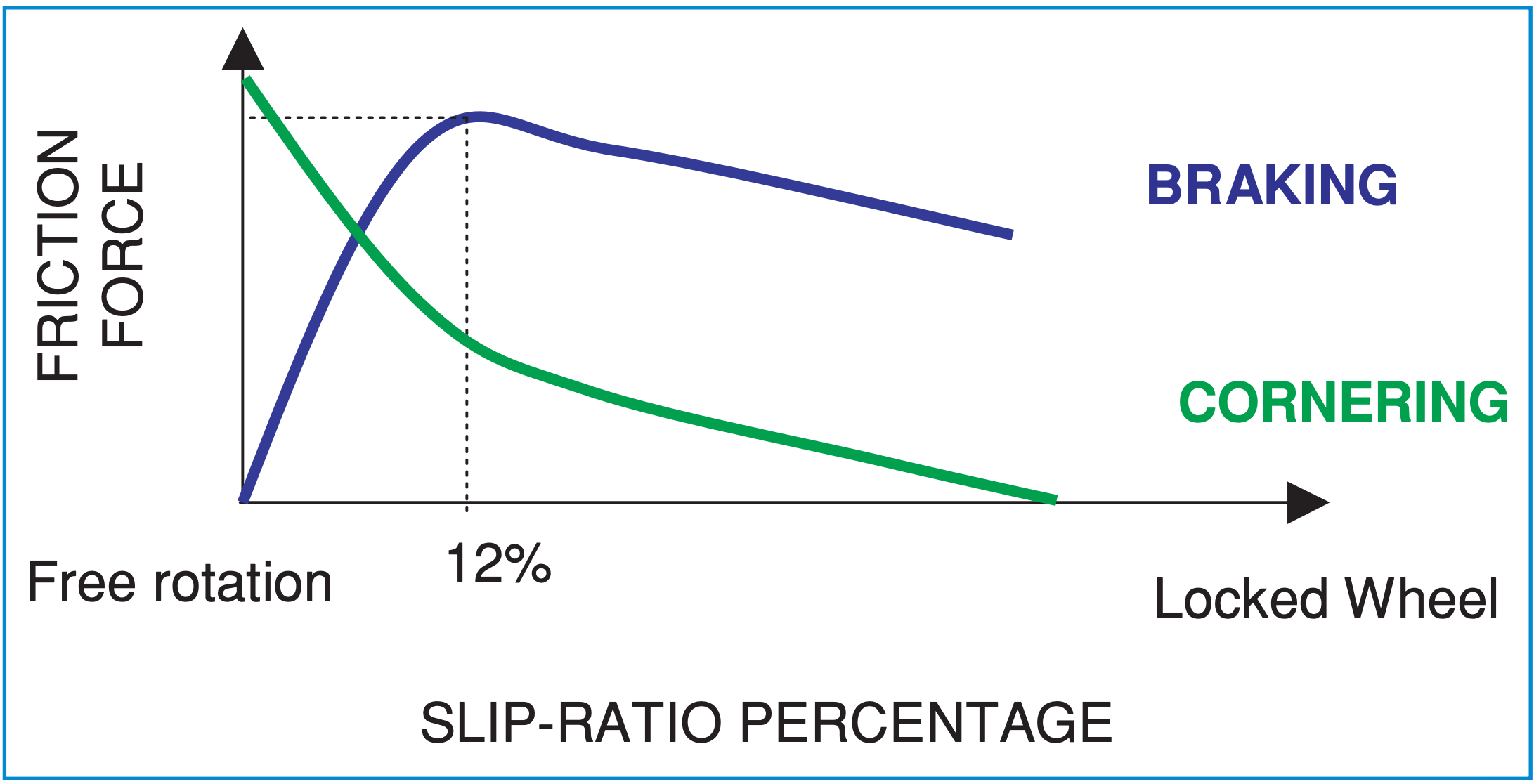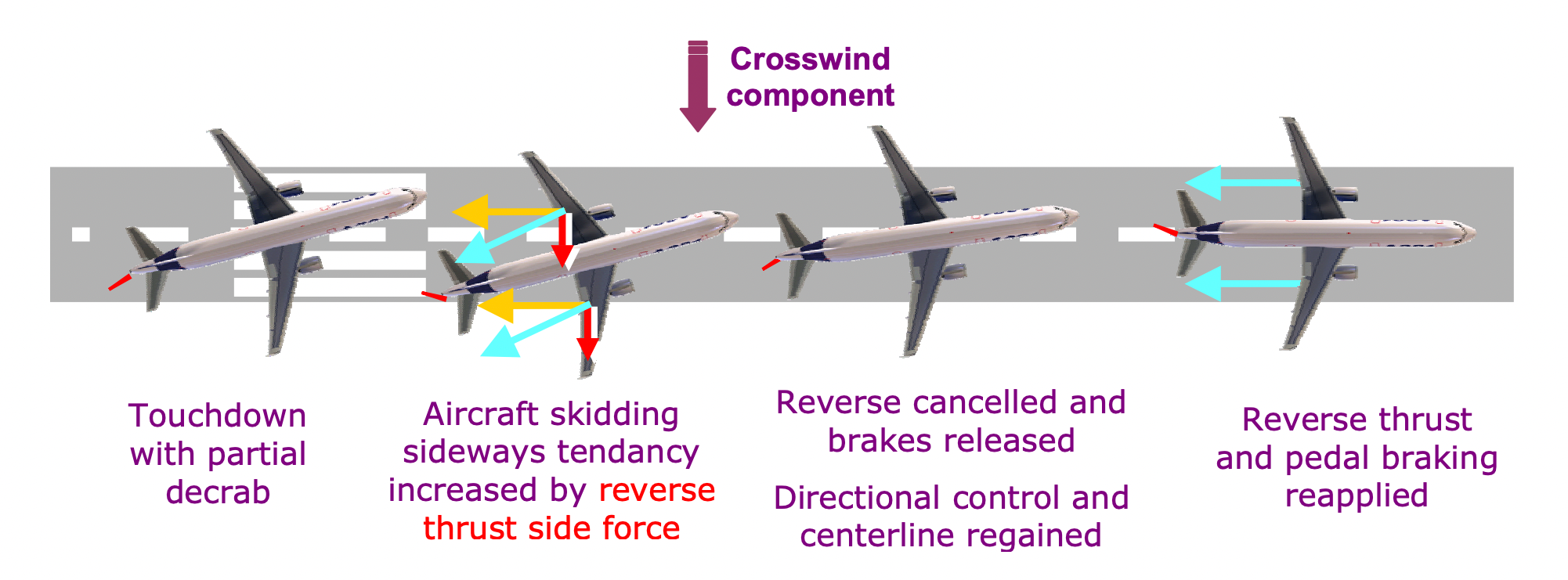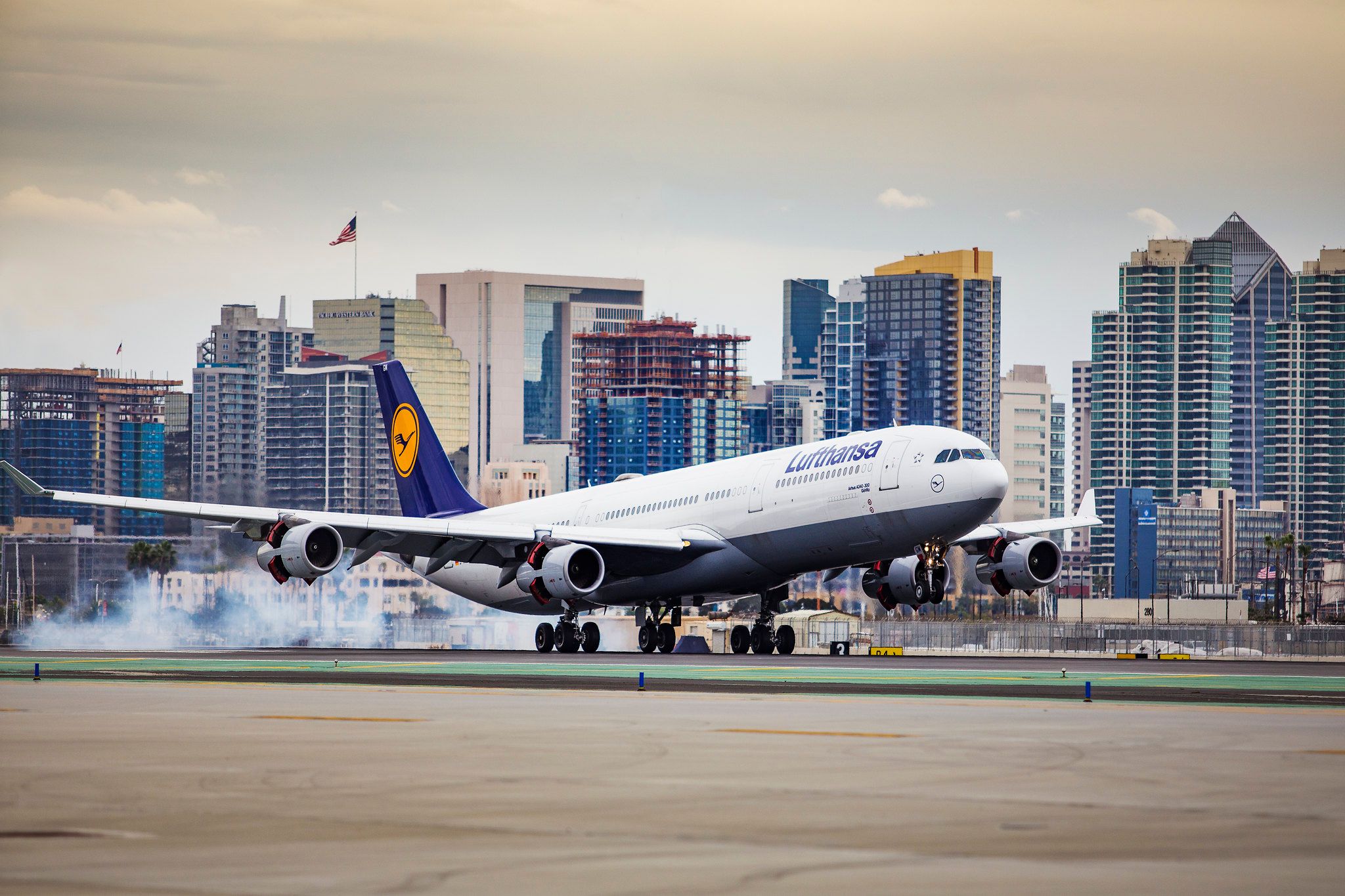Anyone who has driven a road vehicle would be aware of the difficulties faced in braking and handling on a wet road. On a wet road, the braking efficiency is reduced and thus, if you are not careful with those brakes, your vehicle might slip and go into a dangerous situation.
The laws of ground dynamics also apply to an aircraft as it strolls on the ground. So, when taking off and landing in wet and contaminated conditions, things get a bit complex.
The difference between a wet and a contaminated runway
In aviation and aero engineering, there is a distinct difference between a wet runway and a contaminated runway.
According to EASA, a wet runway is defined as follows:
‘Wet runway’ means a runway of which the surface is covered with water, or equivalent, less than specified by the ‘contaminated runway’ definition or when there is sufficient moisture on the runway surface to cause it to appear reflective, but without significant areas of standing water.
For practical purposes, the standing water should not exceed 3 mm on a wet runway.
A contaminated runway is defined by EASA as follows:
‘Contaminated runway’ means a runway of which more than 25% of the runway surface area within the required length and width being used is covered by the following:
- Surface water more than 3 mm (0.125 in) deep, or by slush, or loose snow, equivalent to more than 3 mm (0.125 in) of water; snow which has been compressed into a solid mass which resists further compression and will hold together or break into lumps if picked up (compacted snow); or
- Ice, including wet ice.
One might wonder why they are differentiated. The reason is that the braking capability of an aircraft is different when on a wet runway compared to on a contaminated runway. There is a significant difference between the frictional coefficient of a wet runway and that of a contaminated runway. This drastically affects the braking.
On a wet runway, the braking is reduced due to the formation of a film of water around the tire which prevents it from touching the surface. This may lead to something called hydroplaning, which will be discussed later.
When it comes to contamination, there are two types. One is fluid contamination, and the other is hard contamination.
A fluid-contaminated surface or runway is contaminated with water or slush. This reduces friction like that of a wet runway, but in this case, the reduction is more severe. In such a runway, there is a little increase in braking due to the presence of displacement drag and impingement drag. The displacement drag is caused by the displacement of water or fluid from the path of the tire. The impingement drag is caused by fluid hitting the fuselage and other parts of the aircraft as the aircraft.
A hard contaminated runway, as the name suggests, is a runway with hard contaminants. Ice and compacted snow are an example of hard contaminants. When a wheel rolls over such contaminants, they do so with reduced friction than on a dry runway.
A look at Hydroplaning
There are three types of hydroplaning. Dynamic, viscous, and reverted rubber hydroplaning
Dynamic hydroplaning
In dynamic hydroplaning, the water fails to escape the tire footprint area. This floats the tire off the runway reducing the effectiveness of braking because the contact between the tire and the runway is eliminated.
The formula for dynamic hydroplaning is given by 9 x square root of tire pressure.
Viscous hydroplaning
Due to the viscous properties of water, it acts like a lubricant. When water acts like so, the tire may fail to break through the layer. This is similar to dynamic hydroplaning as it reduces the contact between the tire and the runway and reduces the effectiveness of breaking.
To prevent viscous hydroplaning, runways are grooved. This breaks the water film and prevents a layer from developing.
Reverted rubber hydroplaning
This is one of the most interesting types of hydroplaning. This type of hydroplaning occurs when the wheels lock up. This locking up generates enough heat to convert the water between the tire and the runway into steam. This lifts the wheel off the runway reducing the braking.
To prevent reverted rubber hydroplaning, airplanes use anti-skid systems. If not available, pilots must use light brake applications to prevent the wheels from lock-up.
How wet and contaminated runways affect aircraft handling on the ground
The wet and contaminated runways affect aircraft handling mainly on landing.
When pilots apply braking after touchdown, a frictional force is developed. This frictional force mainly depends on two factors. One on the load on the aircraft (its weight) and the coefficient of friction (depends on surface conditions). So, it can be written as:
Frictional force = Weight x Coefficient of Friction
When the wheels of the aircraft (tires) are acting straight in the direction of the motion of the aircraft, the frictional force acts straight against the motion of the aircraft.
However, this rarely happens. Airplanes are affected by winds, and when landing, the wind rarely blows straight against the aircraft. There always exists a side wind which is known as the crosswind component. This means that when the aircraft touches down, the direction of its wheels and the direction of its motion is not the same. The angle between the direction of motion of the aircraft and the direction of wheels is known as the yaw angle.
When landing in such conditions, a lateral force develops on the tire known as the cornering force. The cornering force is developed due to the slight deformation of the tire due to the difference is aircraft motion and the tire. This is the same force that allows a car to turn without it going off the road. For an airplane that lands with yaw, it is this cornering force that tries to straighten it on the runway. If you have seen those crosswind landing videos on YouTube, you would have noticed airplanes touching down sideways. And as soon as the wheels contact the runway, the aircraft straightens. This happens automatically due to the cornering force. If the cornering force is low or if it does not exist, the centrifugal force that is developed due to inertia can make the aircraft slide off the runway.
When an airplane lands with yaw, the frictional force is no longer straight as it splits between the cornering force and the braking force. So, if the pilot brakes too much, it can reduce his or her ability to steer the aircraft. On a hard dry runway, the frictional force is quite strong, and thus the pilot has more to play with as he or she can easily brake and still have enough cornering force.
However, when the runway is contaminated, the frictional force is small, and the pilot has less to play with. He or she may have to choose between braking and controlling the aircraft. If the pilot feels that he or she is losing directional control on a wet or contaminated runway, particularly with a strong crosswind, releasing brakes can increase the cornering force and help to get back on the runway center line.
On a slippery runway, the reverse thrust can also be detrimental to steering with crosswinds. With the aircraft landing sideways, the reverse force is split into a vertical and a horizontal component. This horizontal component, plus the crosswind component, tries to push the aircraft out of the runway. To prevent this, the cornering force must work a bit extra. So, stowing the reversers and preventing the development of a reverser horizontal component can help to gain control of the aircraft when landing on a wet or contaminated runway with strong crosswinds.
Due to the connection between crosswinds, braking, and cornering, aircraft manufacturers reduce the maximum crosswind component for landing on a wet or contaminated runway. For example, the Airbus A320 has a maximum crosswind component of 38 knots on a dry runway. But this is reduced to 20 knots on a runway with standing water exceeding 3 mm.
How should pilots land on a wet or a contaminated runway
Understanding the conditions
It is always important for a pilot to fully understand the condition of the runway he or she is trying to land or take off from. Usually, the ATC asks pilots who have landed previously about braking efficiency. These PIREPs (Pilot Reports) can be quite helpful. If the pilot feels that the provided information is not enough and it is too risky to land, some other runway with better conditions can be chosen. Or he or she could enter a hold until the conditions get better. If this cannot be guaranteed, the safest option is to divert to another airport.
Pilots these days are provided with sophisticated onboard software which can calculate aircraft performance, such as landing distances with a push of a button. All one must do is enter the prevailing conditions. This can be used to assess the performance of the aircraft before the approach is started to make the landing.
The importance of a stabilized approach and the use of correct landing technique
When landing on a wet or contaminated runway, it is paramount to be stabilized. The aircraft must be kept on the correct glide path, and the approach speed must be maintained to the dot. The faster the landing, the more runway that is required to stop the aircraft. If not stabilized, the reduced braking of a wet or contaminated runway can lead to a runway overrun.
The landing should be firm and floating over the runway for a smoother touch-down should be avoided. A firmer landing allows the water film on the runway to break, reducing hydroplaning. It also allows for quicker extension of ground spoilers. Landing on spot also increases the available runway, which means that the pilot has more runway to stop the aircraft which is quite important on a runway with less braking efficiency.

